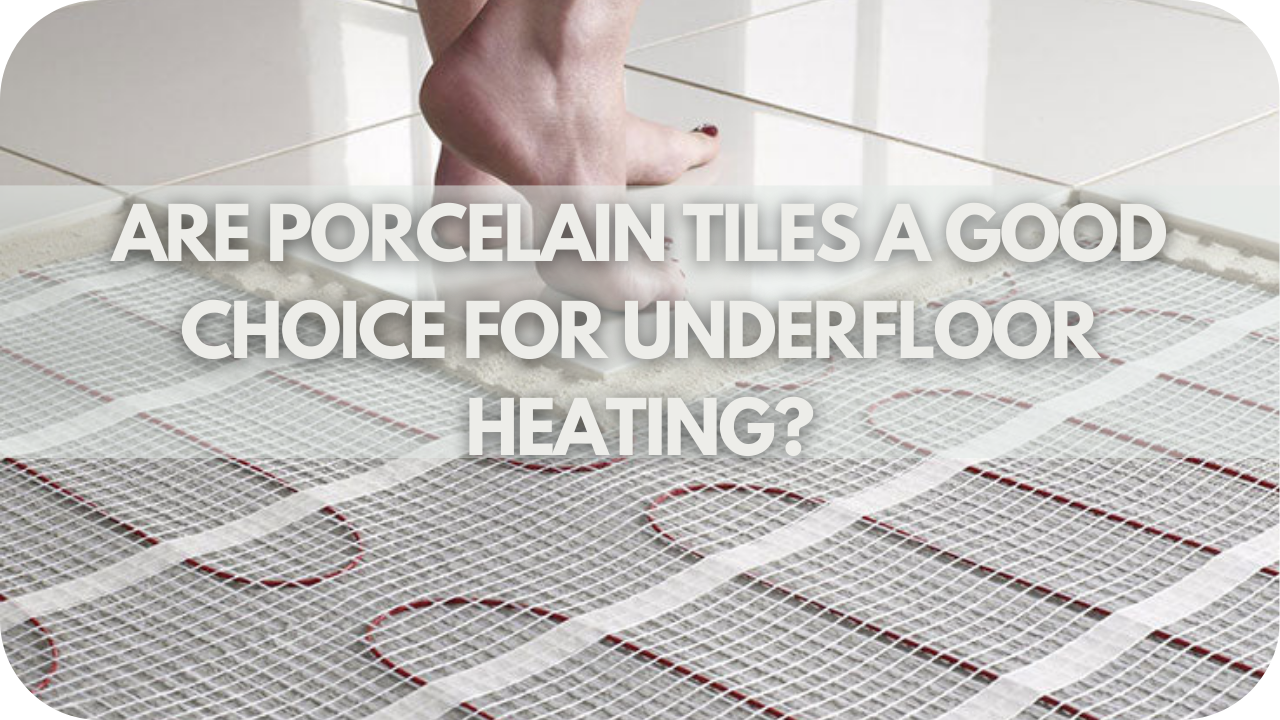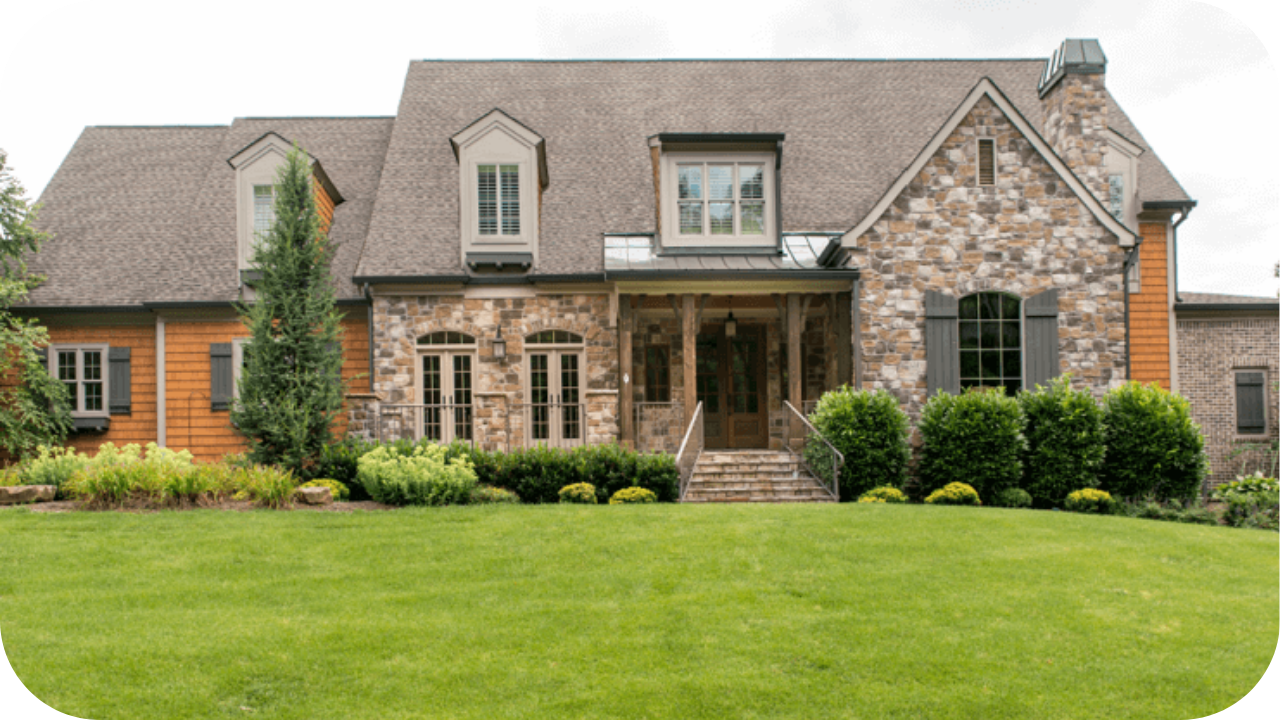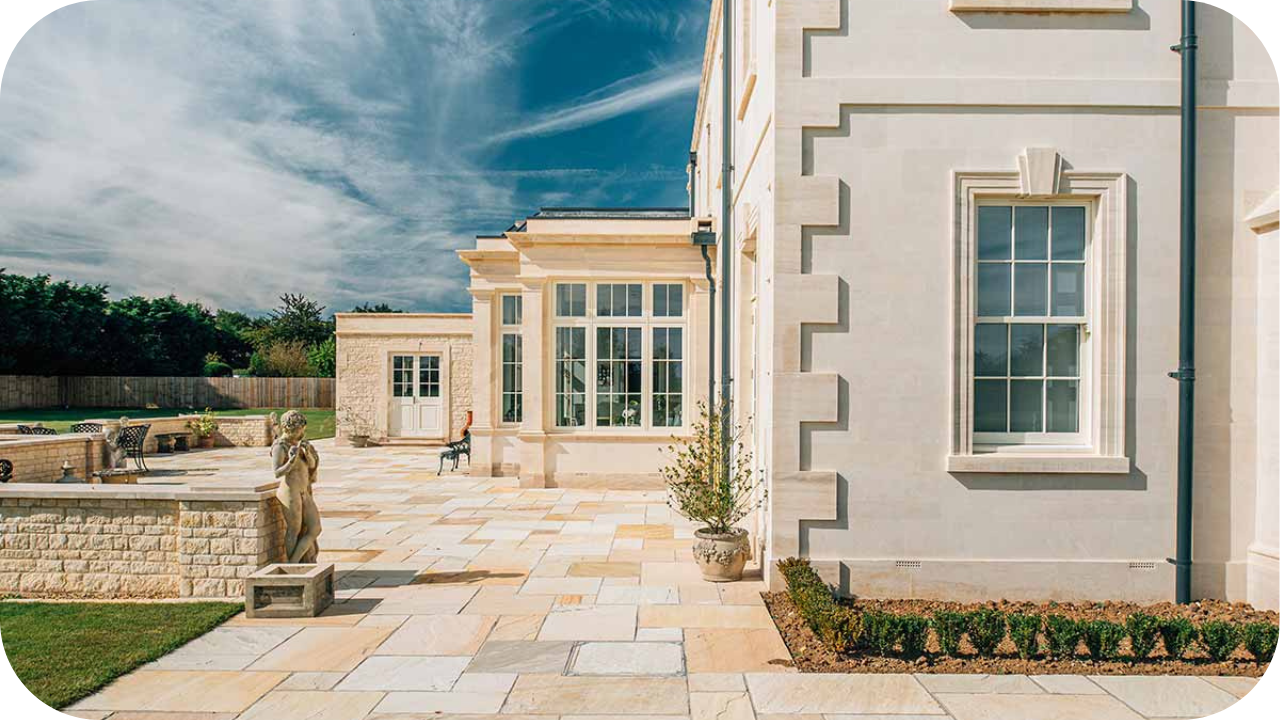
Struggling to find the best flooring material that works with underfloor heating? It’s a common dilemma many homeowners face. Choosing the wrong option can leave you with uneven heating or worse – higher energy bills.
Imagine investing in underfloor heating only to feel cold spots underfoot. Even worse, your flooring could end up cracked or damaged because it couldn’t handle the heat.
Known for their durability and exceptional heat conduction, they could be the perfect solution for your warm and cosy home. Let’s explore why!
Are Porcelain Tiles a Good Choice for Underfloor Heating?
Yes, porcelain tiles are an excellent choice for underfloor heating. Their high thermal conductivity allows heat to distribute evenly, making them energy-efficient. They are also durable, resistant to heat and moisture, and easy to maintain, making them ideal for rooms like kitchens and bathrooms.
Benefits of Porcelain Tiles with Underfloor Heating
When it comes to pairing style with practicality, porcelain tiles offer unmatched advantages for underfloor heating systems. Here’s why:
- High thermal conductivity: Porcelain tiles heat up quickly, ensuring faster and more efficient warmth distribution.
- Energy efficiency: These tiles retain heat effectively, helping maintain consistent temperatures and reducing energy consumption.
- Durability: Porcelain withstands high temperatures without cracking or warping, ensuring longevity for both the tiles and the heating system.
- Moisture resistance: Unlike many other materials, porcelain is unaffected by moisture, making it ideal for bathrooms and kitchens.
- Easy maintenance: The non-porous surface of porcelain tiles resists stains and water, simplifying cleaning and upkeep.
- Design versatility: With a wide range of styles and finishes, porcelain tiles provide aesthetic appeal and practical functionality for modern homes.
- Allergy-friendly: Porcelain tiles don’t harbour dust, allergens, or mould, contributing to better indoor air quality.
- Sustainability: Many eco-friendly porcelain tiles are made from natural materials, contributing to a greener home.
- Compatibility: Porcelain tiles are suitable for electric and water-based underfloor heating systems, making them versatile for any heating setup.
- Cost-effective: Although porcelain tiles can be an initial investment, their durability and energy efficiency result in long-term savings.
Best Porcelain Tiles for Underfloor Heating
Choosing the right porcelain tiles can make all the difference in how efficiently your underfloor heating works. But which ones are the best? Here are the top options to keep your home warm and stylish!
1. Large-Format Porcelain Tiles
Large-format porcelain tiles are the top choice for underfloor heating due to their expansive surface area. Fewer grout lines allow for more even heat distribution, which maximises the efficiency of your heating system. These tiles are perfect for large open-plan spaces and provide a modern, seamless look.
2. Thin Porcelain Tiles
Thin porcelain tiles are an excellent option for quicker heat transfer. Their reduced thickness allows them to heat up more rapidly and respond better to temperature changes. This makes them ideal for areas where quick warmth is essential, like bedrooms and living rooms.
3. High-Density Porcelain Tiles
Porcelain tiles with high density and low porosity are highly efficient for underfloor heating. These tiles retain heat well and reduce the risk of thermal expansion, ensuring durability and long-term performance. They are suitable for high-traffic areas such as kitchens and hallways.
4. Matte Finish Porcelain Tiles
Matte finish porcelain tiles are practical for spaces prone to moisture, such as bathrooms and kitchens. Their slip-resistant surface makes them a safe choice while still allowing for effective heat conduction. They balance both functionality and style.
5. Polished Porcelain Tiles
Polished porcelain tiles bring a sleek and contemporary look to any room. While they may not heat up as quickly as thinner options, they still perform well with underfloor heating. Ideal for living areas or dining rooms, these tiles are perfect for those seeking a high-gloss, elegant finish.
6. Textured Porcelain Tiles
Textured porcelain tiles are ideal for areas that require additional grip, such as entryways or wet rooms. The textured surface enhances safety by providing slip resistance while still offering effective heat conduction. These tiles are a great blend of practicality and style, particularly in spaces that experience moisture.
Factors to Consider When Selecting Porcelain Tiles for Underfloor Heating
Imagine stepping onto a beautifully warm floor on a cold morning—pure comfort! But achieving this perfect warmth depends on choosing the right tiles. What should you consider when selecting porcelain tiles for underfloor heating to ensure both style and efficiency?
1. Thermal Conductivity
Porcelain tiles excel at thermal conductivity, ensuring efficient heat transfer and rapid room warming. Unlike insulating materials like wood, porcelain directs heat effectively, reducing energy consumption by up to 30%. Its dense structure retains warmth even after the heating is off, making it ideal for both electric and water-based systems.
2. Thickness
Tile thickness affects heating efficiency. Thinner tiles (8mm-12mm) heat quickly but lose warmth faster, while thicker tiles retain heat longer but take more time to warm up. Balancing thermal efficiency and durability is key for effective heating.
3. Size
Large tiles conduct heat more efficiently with fewer grout lines, promoting consistent heating. Small tiles may trap heat in the grout, slowing heating times. Tile size influences both aesthetics and heating performance, requiring careful selection based on room layout.
4. Subfloor Preparation
Proper subfloor prep is vital for efficient heating. A level, clean subfloor ensures even heat distribution, while insulation boards reduce heat loss. Moisture-proofing is crucial in damp areas to avoid long-term damage to tiles and heating systems.
5. Installation
Correct installation is essential for optimal heating efficiency. Ensure heating systems are tested before tiling and use adhesives suited for underfloor heating. Even tile laying and proper grout application prevent cold spots and enhance heat distribution.
6. Maintenance
Porcelain tiles are durable and easy to maintain—regular sweeping and mopping suffice. Check grout lines periodically for damage to maintain heating efficiency. Occasional professional inspections of the heating system help maintain performance and energy efficiency.
Comparing Porcelain Tiles to Other Flooring Options for Underfloor Heating
When deciding on the best flooring for underfloor heating, weighing the pros and cons of each material is important. Let’s explore how porcelain tiles measure up against other popular options:
1. Porcelain Tiles vs. Wood
Porcelain tiles offer superior heat conductivity compared to wood. While wood floors provide a warm, natural aesthetic, they are prone to warping or shrinking due to prolonged exposure to heat from underfloor systems.
Porcelain tiles, on the other hand, are highly durable and resistant to thermal expansion, making them a more reliable long-term choice. Wood also tends to trap heat, resulting in slower heat distribution, whereas porcelain tiles allow for faster and more efficient warmth spread.
2. Porcelain Tiles vs. Laminate
Laminate flooring can mimic the look of wood but doesn’t perform as well as porcelain tiles with underfloor heating. Laminate is more susceptible to damage from heat and moisture, whereas porcelain is highly heat-resistant and moisture-proof.
Additionally, porcelain tiles retain and conduct heat better than laminate, often resulting in lower energy consumption and better overall efficiency.
3. Porcelain Tiles vs. Carpet
Carpet, though comfortable underfoot, acts as an insulator, slowing down heat transfer and reducing the effectiveness of underfloor heating. In contrast, porcelain tiles allow heat to pass through efficiently, warming the space more quickly and evenly.
While carpets may provide a soft surface, porcelain tiles offer a more practical solution for underfloor heating, especially when energy efficiency is a priority.
4. Porcelain Tiles vs. Natural Stone
Natural stone tiles are another excellent choice for underfloor heating due to their high thermal conductivity. However, stone tends to be more expensive than porcelain and may require additional maintenance.
Porcelain tiles provide similar heat retention properties at a lower cost and are generally easier to maintain, making them a more accessible option for most homeowners.
5. Porcelain Tiles vs. Vinyl
Vinyl flooring is often chosen for its affordability, but it lacks porcelain tiles’ durability and heat retention capabilities. Vinyl is also more prone to damage from prolonged heat exposure, while porcelain is specifically designed to handle the temperatures of underfloor heating systems.
6. Porcelain Tiles vs. Engineered Wood
Engineered wood provides better resistance to heat than traditional wood, but it still doesn’t match the thermal efficiency of porcelain tiles. Porcelain tiles conduct and retain heat more effectively, making them ideal for underfloor heating.
Additionally, engineered wood, while more stable than natural wood, can still be affected by moisture and temperature changes, which isn’t a concern with porcelain tiles.
Installation Tips for Porcelain Tiles with Underfloor Heating
Achieving optimal performance from your underfloor heating system requires careful attention during installation. Here are essential tips to ensure your porcelain tiles are installed correctly:
- Ensure a level subfloor: The subfloor must be clean, dry, and level to ensure even heat distribution and prevent tile damage.
- Use flexible adhesive: A flexible adhesive designed for underfloor heating will accommodate the expansion and contraction of the tiles, preventing cracks or loosening.
- Select heat-resistant grout: Choose grout that can withstand heat to prevent cracking or discolouration over time.
- Opt for large-format tiles: Larger tiles with fewer grout lines help reduce heat loss, improving overall efficiency.
- Test the heating system before tiling: Make sure the heating system works properly before laying the tiles to avoid costly repairs in the future.
- Consider professional installation: While DIY may seem appealing, hiring a professional ensures proper installation and long-lasting performance.
Maintenance and Care for Porcelain Tiles with Underfloor Heating
Maintaining porcelain tiles with underfloor heating is straightforward, but a few key steps will ensure they remain in top condition.
Regular cleaning with a soft mop or vacuum helps to remove dust and debris, preventing scratches and preserving the tiles’ finish. Avoid harsh chemicals, as porcelain is non-porous and doesn’t require aggressive cleaners to stay spotless.
In case of spills, wiping them up promptly prevents stains from settling, though porcelain is naturally resistant to most stains. Occasional deep cleaning with a mild detergent will keep the surface fresh and vibrant without damaging the tiles or affecting the heat transfer.
Monitoring grout lines for signs of wear or cracking is also essential. Reapplying with a grout sealer every few years can help maintain the grout’s integrity and prolong your tiles’ lifespan. Finally, using furniture pads and avoiding dragging heavy items across the floor will prevent potential damage.
Conclusion
In summary, porcelain tiles provide a perfect combination of durability, efficiency, and elegance when paired with underfloor heating. Their versatility and ease of maintenance make them a standout option. If you’re considering upgrading your flooring, get in touch with us for expert guidance and professional installation to ensure the best results.
More To Explore

Hamptons-Style Homes and the Right Stone to Match
Hamptons-style homes are synonymous with timeless elegance, offering a perfect blend of coastal charm and sophisticated design. With their light, airy feel and use of

Luxury Looks: Styling Stone in Contemporary Homes
Stone has long been associated with luxury, and in contemporary homes, it brings sophistication and timeless charm. From sleek marble countertops to the warmth of


